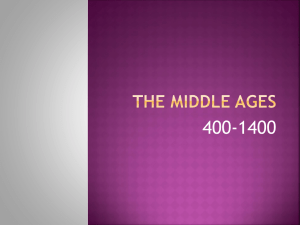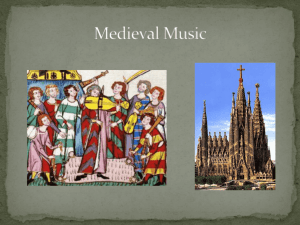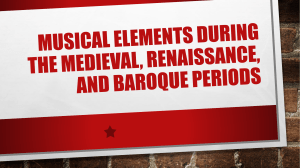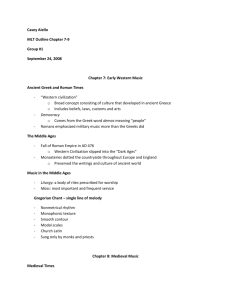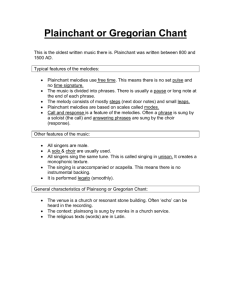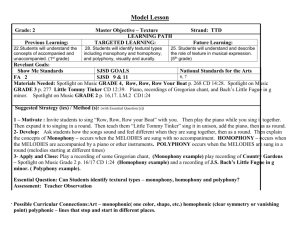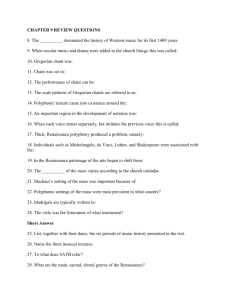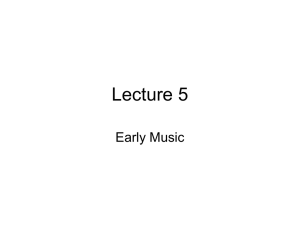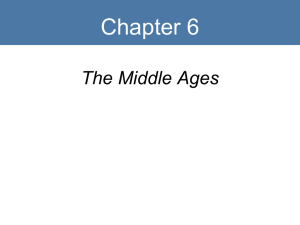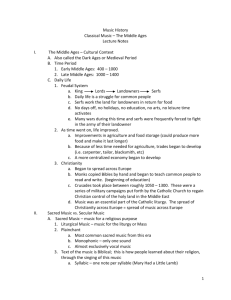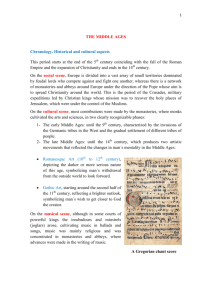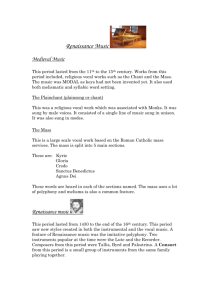Terms and Definitions – Jan
advertisement
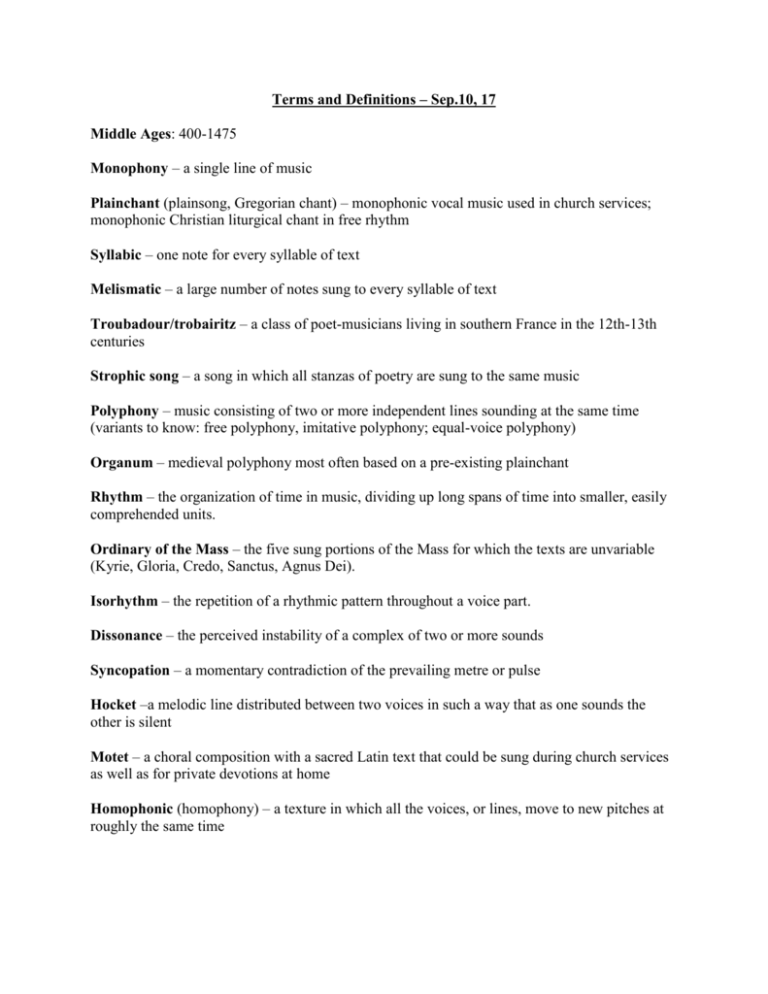
Terms and Definitions – Sep.10, 17 Middle Ages: 400-1475 Monophony – a single line of music Plainchant (plainsong, Gregorian chant) – monophonic vocal music used in church services; monophonic Christian liturgical chant in free rhythm Syllabic – one note for every syllable of text Melismatic – a large number of notes sung to every syllable of text Troubadour/trobairitz – a class of poet-musicians living in southern France in the 12th-13th centuries Strophic song – a song in which all stanzas of poetry are sung to the same music Polyphony – music consisting of two or more independent lines sounding at the same time (variants to know: free polyphony, imitative polyphony; equal-voice polyphony) Organum – medieval polyphony most often based on a pre-existing plainchant Rhythm – the organization of time in music, dividing up long spans of time into smaller, easily comprehended units. Ordinary of the Mass – the five sung portions of the Mass for which the texts are unvariable (Kyrie, Gloria, Credo, Sanctus, Agnus Dei). Isorhythm – the repetition of a rhythmic pattern throughout a voice part. Dissonance – the perceived instability of a complex of two or more sounds Syncopation – a momentary contradiction of the prevailing metre or pulse Hocket –a melodic line distributed between two voices in such a way that as one sounds the other is silent Motet – a choral composition with a sacred Latin text that could be sung during church services as well as for private devotions at home Homophonic (homophony) – a texture in which all the voices, or lines, move to new pitches at roughly the same time
